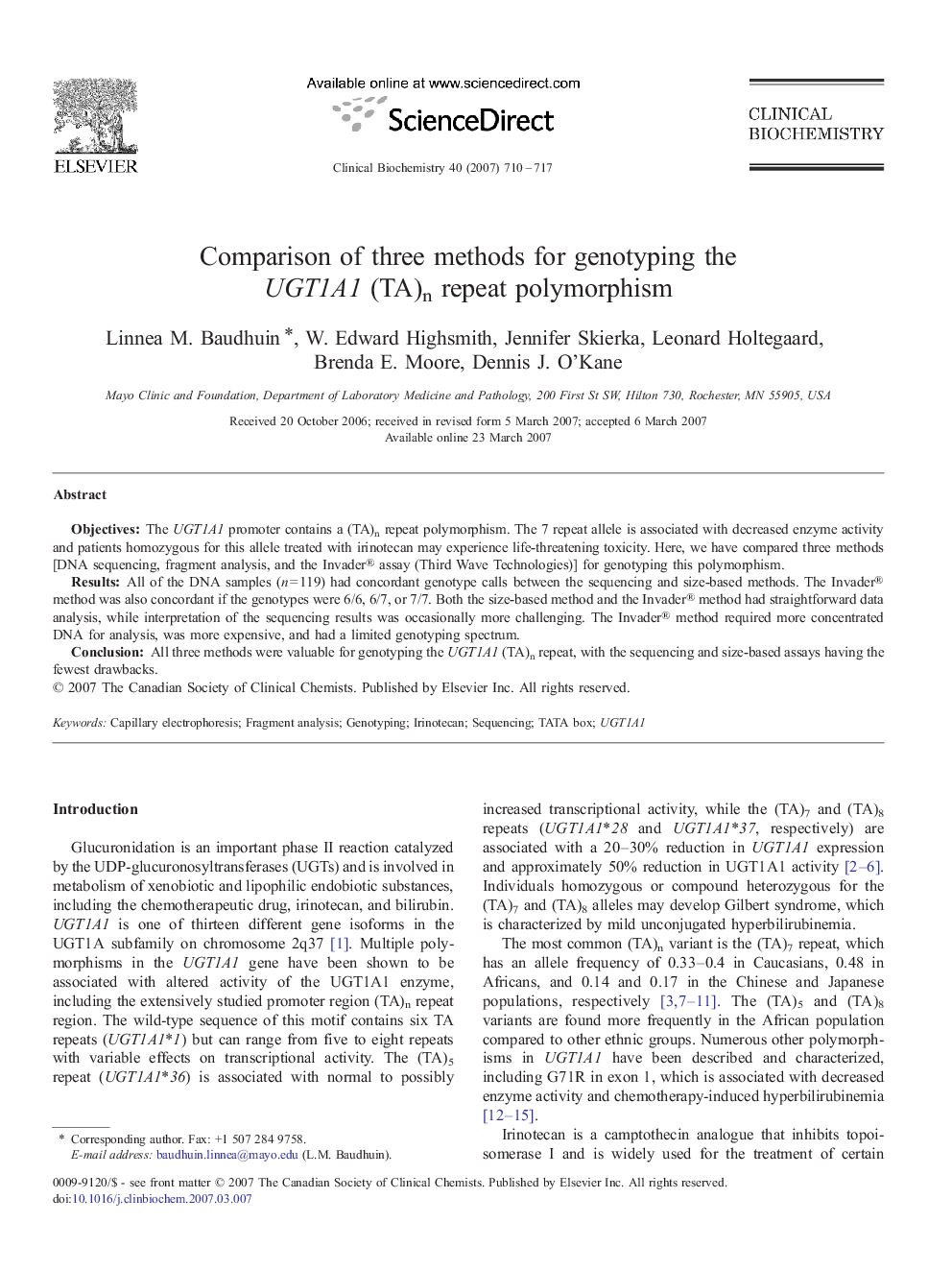| Article ID | Journal | Published Year | Pages | File Type |
|---|---|---|---|---|
| 1970232 | Clinical Biochemistry | 2007 | 8 Pages |
Objectives:The UGT1A1 promoter contains a (TA)n repeat polymorphism. The 7 repeat allele is associated with decreased enzyme activity and patients homozygous for this allele treated with irinotecan may experience life-threatening toxicity. Here, we have compared three methods [DNA sequencing, fragment analysis, and the Invader® assay (Third Wave Technologies)] for genotyping this polymorphism.Results:All of the DNA samples (n = 119) had concordant genotype calls between the sequencing and size-based methods. The Invader® method was also concordant if the genotypes were 6/6, 6/7, or 7/7. Both the size-based method and the Invader® method had straightforward data analysis, while interpretation of the sequencing results was occasionally more challenging. The Invader® method required more concentrated DNA for analysis, was more expensive, and had a limited genotyping spectrum.Conclusion:All three methods were valuable for genotyping the UGT1A1 (TA)n repeat, with the sequencing and size-based assays having the fewest drawbacks.
